Safety switches for position control of movable guards.
R-Safe RFID Safety Switches
R-Safe: Next generation RFID switches
The application of R-Safe RFID sensors can be extremely wide thanks to the
compact and versatile design.
The different design and technology options as well as the complete mechanical compatibility with the Magnus MG and RFID sensors “S” series, make this product extremely valuable for users.
The RFID technology enables R-Safe RFID sensors to be coded in three
different ways to allow the appropriate tampering protection in all applications.
The highest level of coding allows the sensors to be paired only with the assigned actuators.
The RFID technology used allows to reach safety levels up to PL e/SIL 3 also when connecting the sensors in series. As a result, R-SAFE RFID sensors can be
simply integrated in existing safety scenarios, offering a cost-effective solution for modifying and upgrading machines.
The best for series connections
R-Safe RFID allows individual status reading without the need to individually wire the status output of each sensor.
The best in cost-effectiveness
Wear-free technology allows for longer product life time. Status LED and diagnostic output. Full mechanical compatibility with Magnus RFID and Magnus MG “S” series. Can be used as stand-alone or in series.
The best in safety
Tampering protection in accordance with EN ISO 14119, the highest in its class. Screw covers prevent easy removal. Series connection up to PL e/SIL 3. IP67 and IP69K protection grade for use in harsh environments.
The best in versatility
Triple mounting options. M12 connector, M12 connector with pigtail or cable.3 different coding levels. Extension cables for series connection
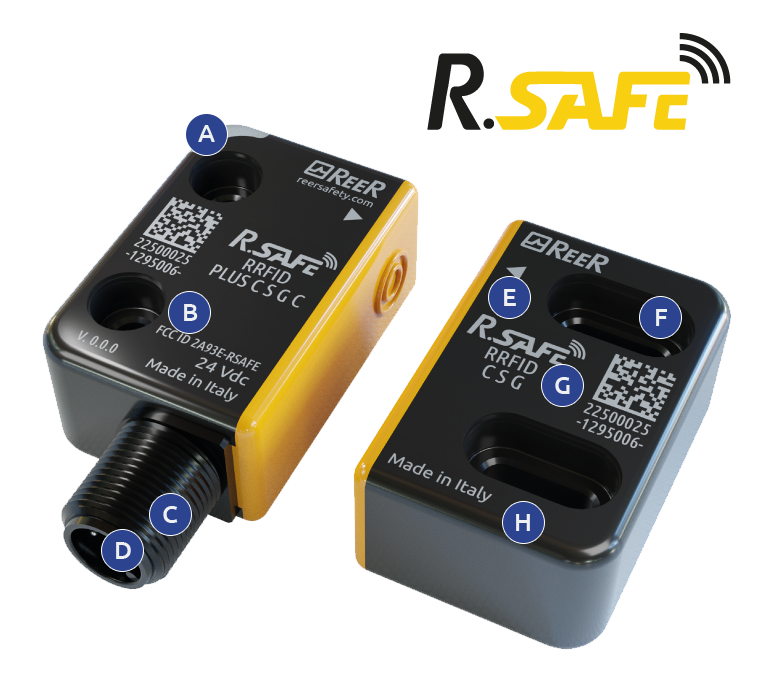
A. Highly visible status LED
B. 22 mm interaxis
C. Series connection with status information
D. M12 connector, Pigtail with M12 connector, 1, 3, 5 or 10 metres cable
E. RFID technology
F. Anti-tampering protection caps
G. 3 different coding levels
H. IP67 and IP69K

Multiple options of actuation technology
Teach-in coding
High level coding
The actuator is programmed via teach-in and permanently assigned to the sensor during set-up (the process can be repeated if necessary)
Unique coding
High level coding
The actuator is permanently assigned to the sensor during manufacturing (it cannot be replaced with another actuator)
Generic coding
Low level coding
The actuator is free and not specifically assigned to the sensor (one actuator can work with multiple generic sensors)

Declaration of compatibility
High resistance of the sensor to cleaning procedures solutions and hygiene products commonly and worldwide used in Food and Beverage Industries.
ECOLAB: Supplier of hygiene solutions in Food and Beverage industries.
The Ecolab Technical Application Service Italy certifies that: the R-SAFE RFID sensor series, manufactured by REER S.p.A. is well compatible with the below listed Ecolab detergents and disinfectants for a time equivalent to 6 years of daily cleaning.
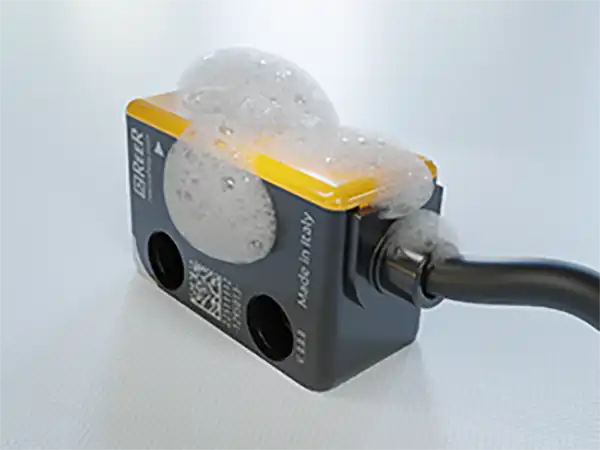
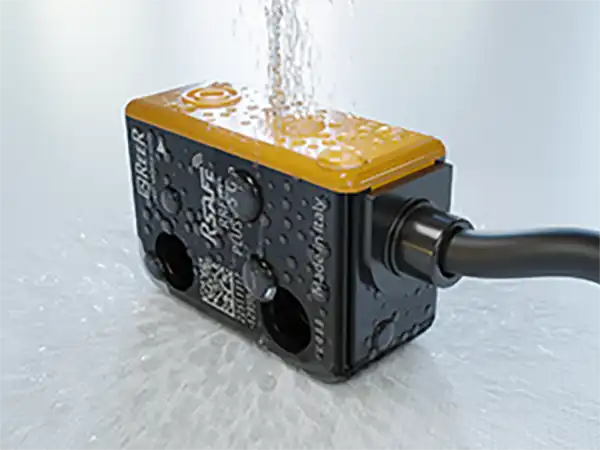
Ecolab detergents and disinfectants type
- Acid foaming detergent – Topaz AC5 (dilution 5%)
- Foaming disinfectant peracetic-peroctanoic based – P3-topactive OKTO (dilution 3%)
- Alkaline chlorinated foaming disinfectant – P3-topax 66 (dilution 5%)
Test procedure
Test performed by Ecolab Technical Application Service
Ecolab reference method 40.1–ISO 4068-1 for the evaluation
- Full immersion of sensors in detergent/disinfectant solutions
- Water hardness of 200ppm CaCO3
- 28 days total time at 20°C (equivalent to the contact time that occurs in 6 years of daily cleaning)
- Concentration tested of detergent / disinfectant is the one normally recommended
- Test solution renewed every 7 days for oxidizing products (P3-topactive OKTO, P3-topax 66)
Basic, Pro and Plus models operative modes
The operative mode is set by wire connections
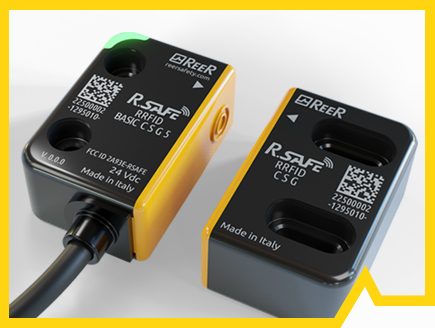
Basic model
Automatic restart
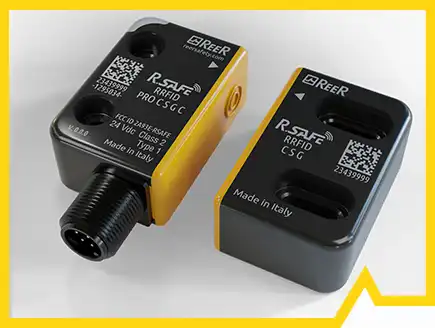
Pro model
- Automatic restart (with or without EDM)
- Serial connection
- Individual status signal for each sensor (notserializable)
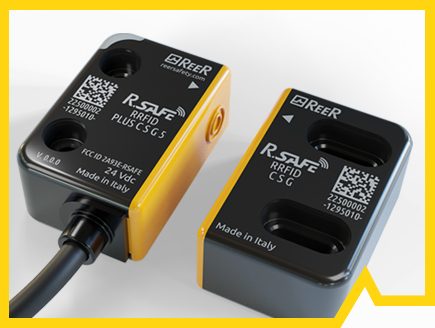
Plus model
- Selectable Manual or Automatic restart (with or without EDM)
- Serial connection
- Serializable status signal with individual status indication for each sensor
Standard and Slim Models
All models are available in sizes: Slim and Standard.
Combo versions (Sensor + Actuator) can be supplied with Standard actuator or Slim actuator.
All models are available:
- BASIC (cable, connector and pig-tail)
- PRO (cable, connector and pig-tail)
- PLUS (cable, connector and pig-tail)
All type of coding are available:
- Generic
- Teach-in
- Unique
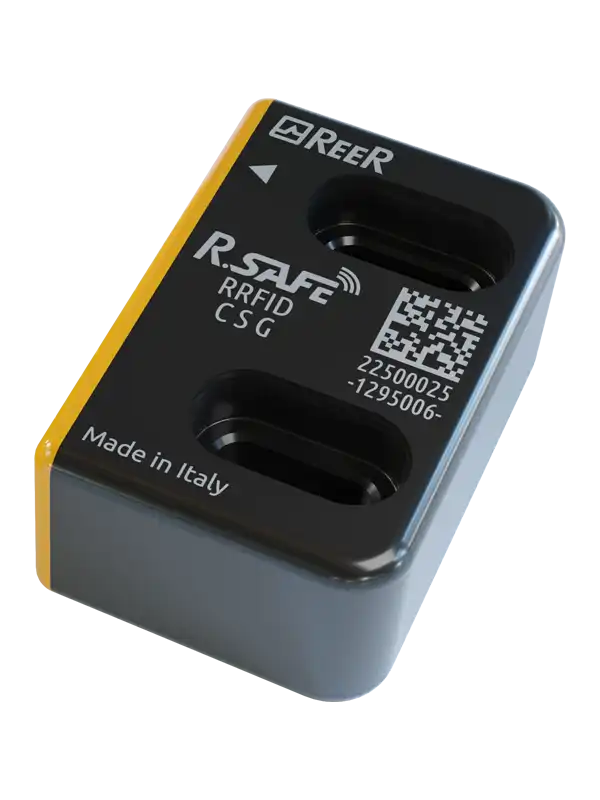
Standard Actuator (S)
Dimensions HxWxD (mm): 28,5 x 42 x 18
Interaxis (mm): 22
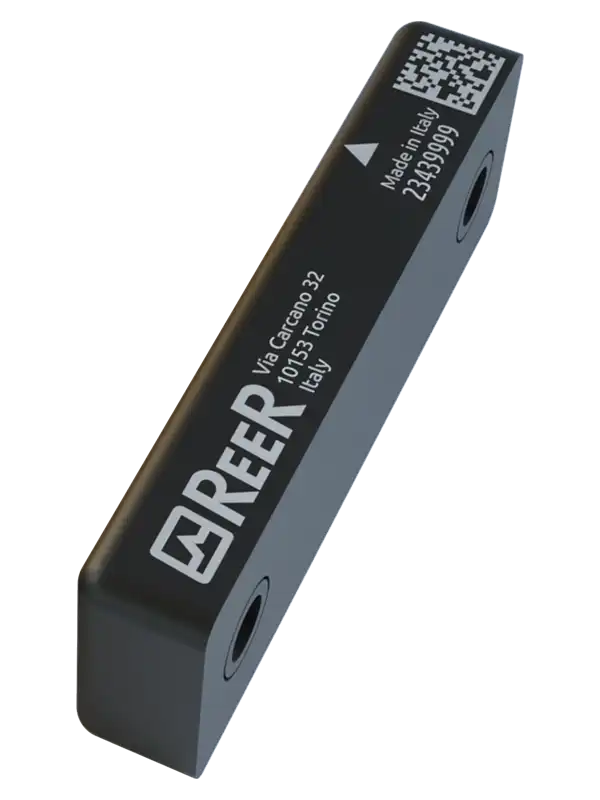
Slim Actuator (M)
Dimensions HxWxD (mm): 9 x 52 x 18
Interaxis (mm): 40


 简体中文
简体中文


